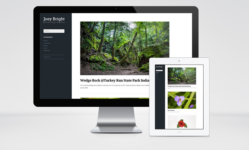Megan recently spent a lot developing her yoga start-up
website for newsletter requests and membership registration. The web designer,
under her supervision, focused mainly on flash images of her yoga classes and
smallpacked texts discussing healthy eating. A month later, Megan’s yoga class
has registered only one member via her website.
Why Has Megan’s Web
Conversion Stalled?
Like Megan, a lot of start-up business owners when designing
their website favour visual attraction over functionality. While it is good for
aesthetic reasons to use flashy images on your site, it is priority to consider
the purpose of the website first, right from when you register a business
name.
Depending on the nature of your business, you may decide to
design your website for informational, brand building or
relationship/engagement purposes.For a website to function effectively, it must
satisfy the following conditions; accessibility, relevance and ease of
navigation.
In order to maximize your website for conversions, it must
be set up to:
1. Be Available and Accessible
If your website isn’t turning up in the relevant places then
the intended audience will miss it. Availability is your website’s ability to be
easily seen on search networks, social media sites and also be accessed on any
device.
Working
Links: If you put up a web-link on a search engine, an affiliate website or
social media site, make sure that it works because a broken link will prevent
potential customers from reaching your website.
Load Time:
The average internet seeker has an attention
span of 8 seconds, if your website takesa longer time to open, they will
quickly bounce off to another easily accessible site. Use efficient domains to
ensure that your website loads fast enough.
Responsiveness:
This Smart
Insights report states that 80% of internet users own a smart phone and 47%
a tablet, hence it is important that your website is optimized for
compatibility with these mobile devices or your business could be losing a
considerable number of its customers.
2. Relevant
When a potential customer visits your landing page the first
thing they do is to skim its contents for the keyword(s) that led them there.
If that keyword is missing or it takes them an unnecessary length of time to
locate, then they will most likely bounce off from your site. Ensure that the
keyword you used on your ad or external link is relevant to the content on your
website, and sufficient to provide the type of answers your visitors are
looking for.
Outdated
Content: If you are a thought leader on a particular topic, your content
should reflect accurate material that is up to date. For brick-and-mortar businesses
that have recently moved location, the corresponding new address should be
visible on the website; usually as a coloured banner.
A highly relevant website also improves its search engine
visibility for web crawlers.
3. Ease of Navigation
Web content managers should work with site designers to develop
the most suitable wireframe that works for the business. Ease of navigation
varies from desktop sites to mobile sites. E-commerce businesses with mobile
sites should spend a considerable amount of time testing this feature because
according to Constantinides’
study, site navigation contributes to web experience which affects buyer
behavior. Key points to note for mobile sites:
·
Scroll navigation is better from top to bottom,
not left to right.
·
Home page should contain all important menu
·
There should be a “back” and “save or store” button
·
Content should be easily available on one page

4. Simplicity
A lot of websites are guilty of very busy landing pages. A first time visitor will immediately be put off if too many activities are going on, on your web page.
· Avoid using several moving images especially if the purpose of the website is brand-building.
· Do not pack texts together with small fonts and long block paragraphs.
· Avoid setting up auto-play videos.
Simplicity is the key to easy navigation.
5. Suitable Image Formats
Images and videos are good for illustrations and to demonstrate product use especially on e-commerce websites. However, not every format is suitable for your website. Flash formats for instance can render your site undetectable by web crawlers and make it incompatible with certain mobile phones. Hubspot lists the various image formats and the best time to apply them to your website.
6. Include a Call to Action
As stated previously, establish a purpose for your website. Once you have decided the kind of goal you want from your visitors or customers, input it into the design by a call-to-action feature. Websites like Megan’s which expect conversions in form of membership requests may have a bold click button that asks visitors to “register here” or “request for newsletter”. Call-to-action features are best placed on the top right corner of your website for visibility.
7. Always Be Testing
The most effective websites are those that are constantly tested for best practices and usability. If you don’t test regularly, you won’t be able to tell which layout saves you more money or which one presents the best set-up for conversion. There are different methods for testing your website, the most common being the A/B testing technique. Present two major alternatives to a group of respondents and gauge their reaction according to your expectations. Usability Geek believes that the Remote Usability method is also suitable for websites. If Megan adjusts her images to HTML5, reduces the size of the text focusingonly on yoga techniques and places a visible “signup for membership” button on her website, perhaps she will observe an improvement in conversion numbers.
Remember to determine first the kind of goal you want your website to achieve and then work towards developing the site accordingly. Be original, avoid outdated content and always test for usability. If you adhere to these tenets, your conversion rates are guaranteed to produce impressive results.








